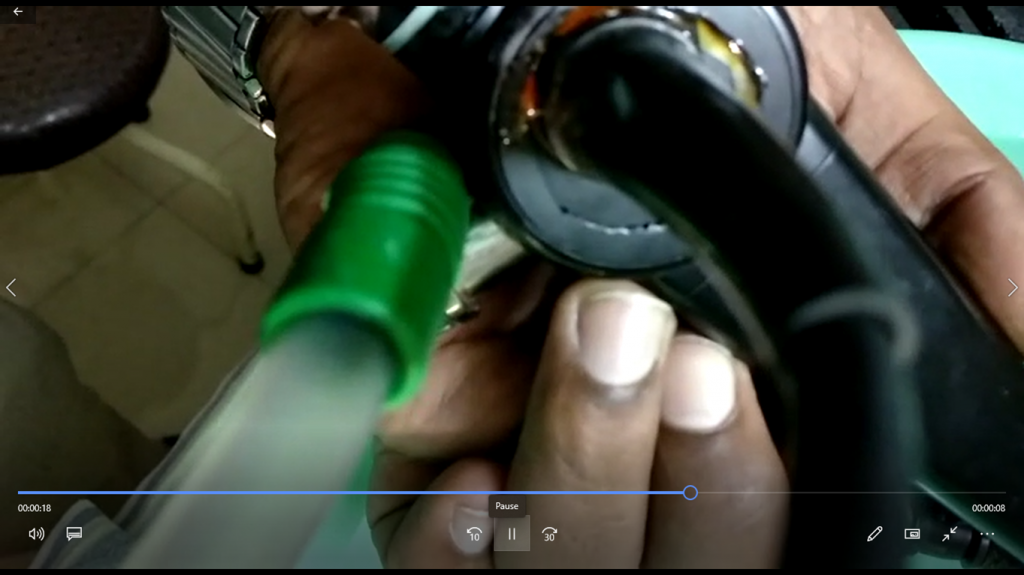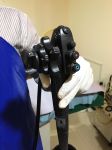
PrimedeQ offers endoscope servicing for Olympus and Pentax scopes. Contact us on +917019759765 or +918971223957 for any flexible endoscope repair or rigid endoscope repair services.
What are the most common Flexible endoscope repairs done?
Common issues and flexible endoscope repair are Air or water channel replacement, angulation adjustment, air / water nozzle unclog or replacement and others:
- A – Rubber replacement
- Air/Water nozzle unclog and/or replacement
- Air/water channel replacement
- Angulation adjustment
- Variable stiffness adjustment
- Angle drive rebuild
- Control button replacement
- Light guide tube/universal cord replacement
- Biopsy channel replacement
- Suction channel replacement
- Suction cylinder or Air / water cylinder unit replacement
- Minor & Major fluid invasion
Flexible endoscopes are expensive and relatively fragile. Endoscopes need good care and proper handling is important. The light fibers are fragile and easily broken.
Proper handling & care of endoscope
include the following Do’s & Don’t s
- The endoscope must be coiled into gentle curves, rather than folding it in acute angles.
- Never drop the endoscope, allow a wheeled cart to roll over it, or allow the patient to bite down on the endoscope.
- After each use, wash off any gross contamination and suction water through the endoscope.
- Do not allow blood, mucus, stool, or other foreign matter to dry on the endoscope or in the channels or valves.
- Be careful to follow the manufacturer’s instructions for sterilization to avoid potentially severe damage to the endoscope.
- Scopes should be regularly checked for rough edges, sharp nozzles, and cracking/deteriorating glue as all of the above can pose a significant risk to patient safety.
Causes of flexible endoscope damage and suggested repair
Some of the common problems observed related to endoscope use, important points to be taken care of with respect to Endoscopes handling and care, damages that may be arise, cause of damage or problems and flexible endoscope repair that can be done are detailed below:
| Problem seen | Possible reason for the problem / Care to be taken | Suggested Repair |
| Poor Air/ Water flow – Water is not shooting over objective lens properly. Air or water nozzle is faulty or missing | Scope is not cleaned immediately following procedure.
Nozzle is damaged, missing or misaligned. Glutaraldehyde buildup from chemical disinfectants can break away from the channel and clog the air/water nozzle. |
Air/water nozzle or channels unblocking / unclogging or replacement is needed. |
| Poor suction – If a groove is worn in suction port, suction is decreased or Blockage/ resistance is felt in the suction channel. | Blockage and/or wear and tear. | Suction Channel replacement |
| No irrigation / No insufflation
Instruments do not pass or resistance is felt in the channel. Buckles or tears are seen in the channel material. |
Valve may be stuck or occluded
Avoid extreme angulation of the tip wherever possible. Do not force biopsy forceps or other instruments down the channel when the tip is sharply angulated, as damage to the biopsy channel may result. Ensure that polypectomy snares and sclerosing needles are fully withdrawn into the sheath before passing through the channel. Lubricate instruments with a suitable lubricant to facilitate passage. Damage to Biopsy Channel is usually caused because of: Kinked, damaged or open Flexible Endoscope biopsy forceps causing tears in the channel material. Buckling of the insertion tube can also cause buckles in the channel. Forcing instrumentation through the channel can cause wear or tears in the channel material. This frequently occurs in the bending section when resistance is met when the scope is angulated. Do not pass anything through the bending section with the tip is angulated further than 110°. |
Biopsy channel replacement |
| Endoscope should angulate smoothly with no play. Angulation may be tight or doesn’t angulate (as per manufacturer specifications). Bending section may bend irregularly or to one side. | Forced angulation may lead to stretch or break in angulation wires. Buckling of the insertion tube can also stretch and break wires. Play in the angulation control knobs usually indicate an angulation adjustment is needed. | Angulation adjustment / angulation wire replacement Bending section mesh or articulating section replacement |
| Clicking and/or sluggishness in the angulation controls may be seen | Angle drive rebuild | |
| Fluid invasion – If small leaks are found in bending rubber, insertion tube, light guide tube, body etc., anywhere on endoscope, this may cause Fluid invasion.
|
Cause of bending sheath damage;
Any sharp objects like instruments, fingernails or bites can cause tears or holes in the sheath material. Over time, normal wear or over inflation can cause stretching or looseness of the bending rubber material. Not following sterilization process properly. One must follow the OEM instructions carefully. |
Immediate Endoscope repair based on the leak is required |
| Stains, “Redcrack”, X-Ray yellowing, image brightness etc. are all signs of fluid invasion in the scope.
If video picture has interference it is a sign of Major Fluid invasion If videoscope starts taking pictures on its own or does not take pictures, this is could be a sign of fluid invasion.
|
Moisture enters the scope through an undetected leak, if the scope comes in contact with any fluid. If a scope has a fluid invasion and is not repaired immediately, video chip damage and image staining can result, as well as corrosion of the internal metal components.
The scope needs immediate repair · If fluid has entered the video switch block controls · If a picture is cloudy on a video scope, look for a buildup of glutaraldehyde on the distal lens. · If there is a buildup or debris on the lens, clean the lens with alcohol wipes. If there is no buildup or debris on the lens, the video scope probably has fluid in the distal end |
If video picture has interference, a Major Fluid invasion or CCD repair is needed!
|
| If buttons are not working or cause constant freezing and beeping of Processor, this may also be due to fluid invasion | Button Replacement | |
| Image & Light Guide Problems
Buckles / bites in the insertion or light guide tubes can break image and light guide fibers. Fluid invasion can cause staining of the fibers, or video chip damage, if not repaired immediately. The fluid also causes brittleness of the fiber bundles. |
Pulling on the insertion or light guide tube, as well as dropping the scope, can cause broken fibers or damage to the video chip.
|
If distal tip is more than 10% broken, Light guide Illumination bundle needs replacement.
|
https://in.linkedin.com/in/shanthi-mathur-ab07838

